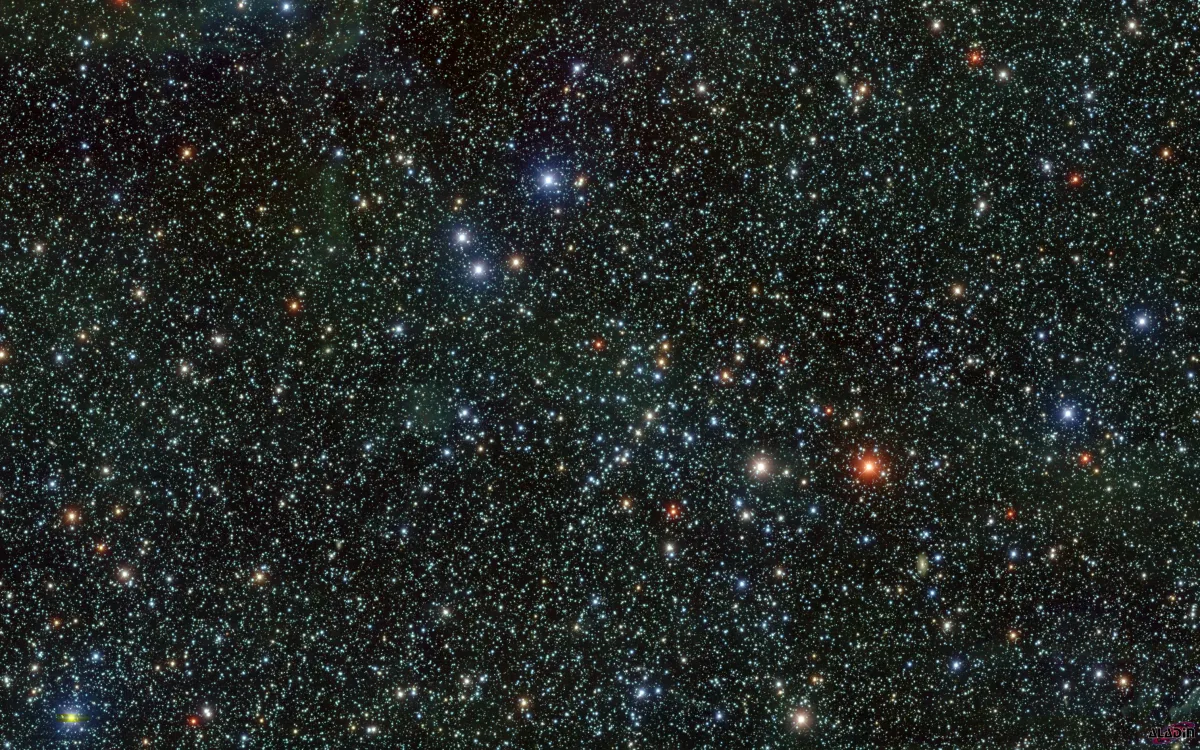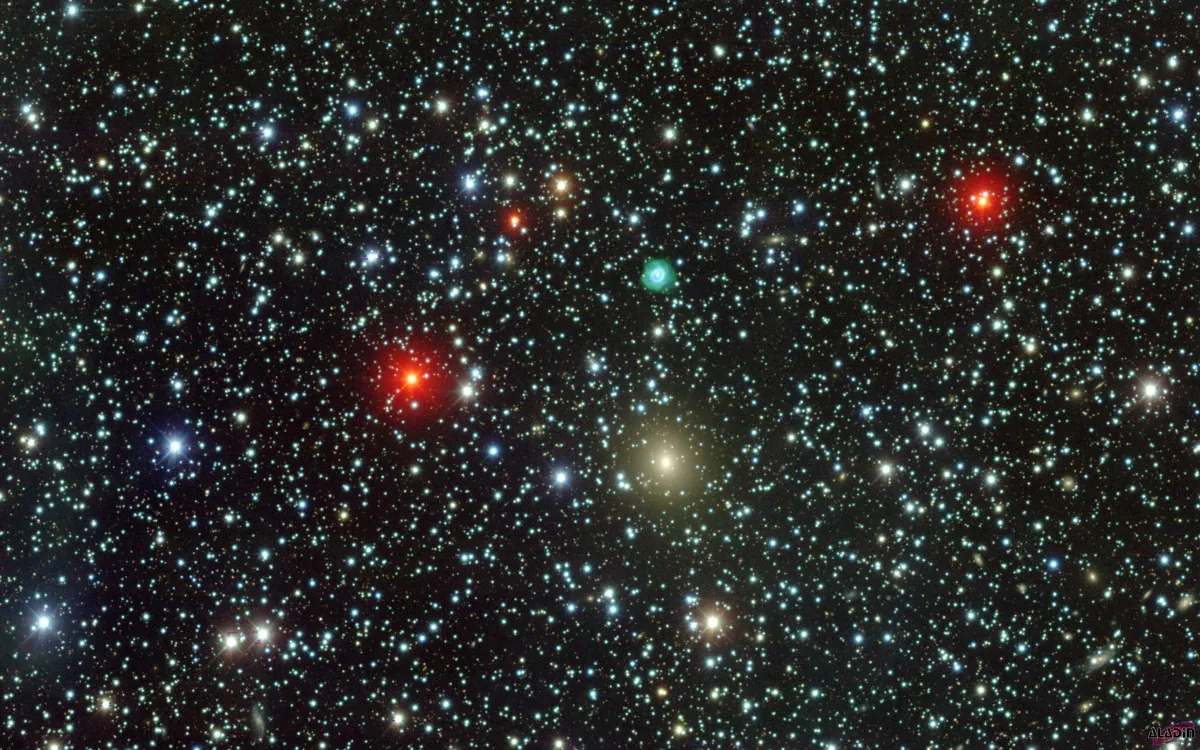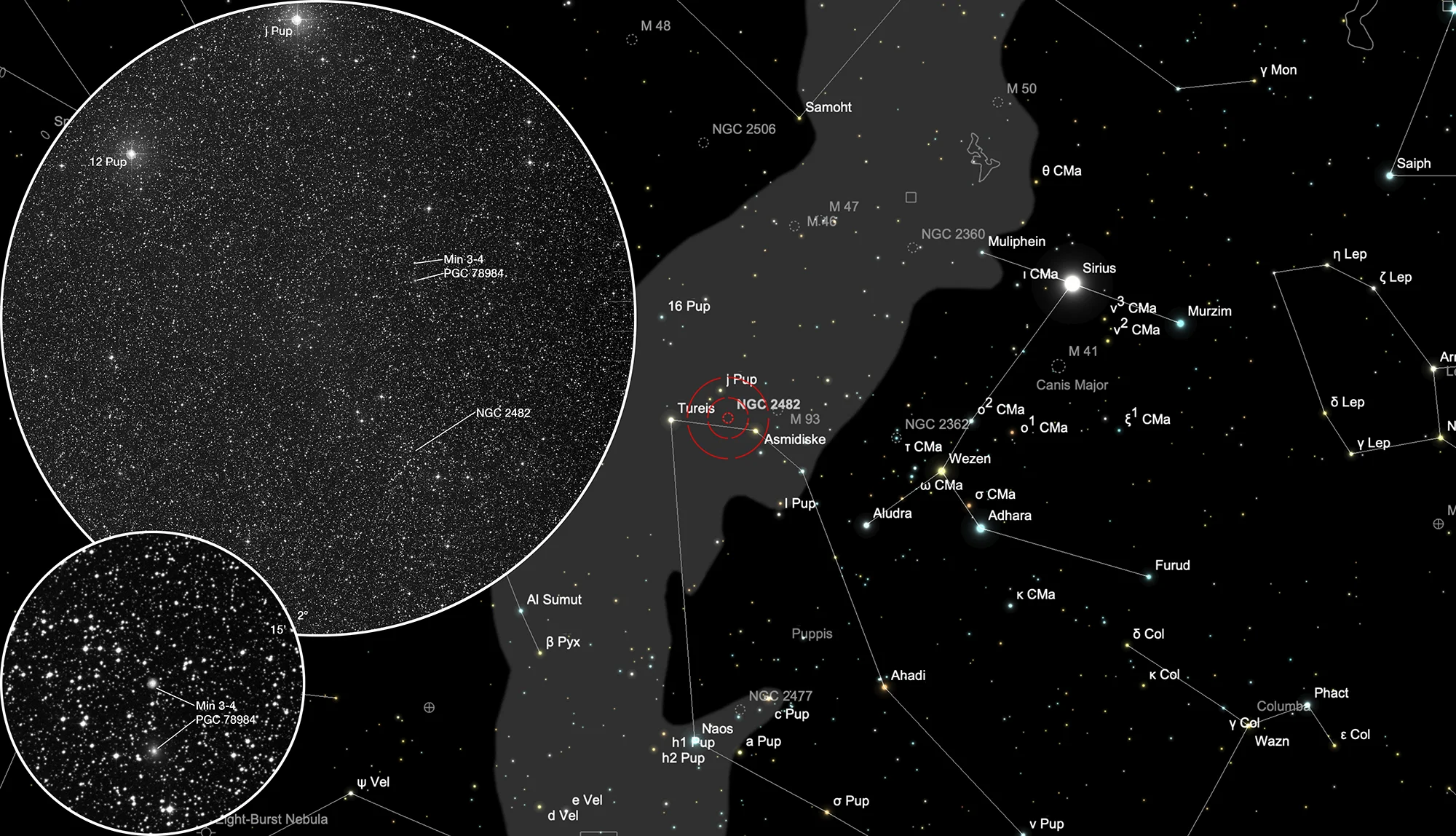Open Cluster NGC 2482 & PN Minkowski 3-4

Open Cluster NGC 2482
This open cluster was discovered by William Herschel on 20 November 1784. He listed it as VII 10 and noted: «A very large cluster of scattered stars, considerably rich and compressed, more than 15' diameter.» [463] His son John observed it on 7 January 1831, listed it as h 474 in his Slough catalogue and noted: «A cluster pretty rich; very coarsely scattered, 10...15' diameter; perhaps 50 stars.» [466] Observing from the Cape of Good Hope on 31 January 1837 he listed it as h 3106 and noted: «A very rich milky way cluster, or mass of stars 10, 111 and 12 magnitudes; diameter 20'. The neighbourhood is rich, but much less so than this cluster.» [11]
| Designation | NGC 2482 |
| Type | OCL (III1m) |
| Right Ascension (J2000.0) | 07h 55m 12.0s |
| Declination (J2000.0) | -24° 15' 30" |
| Diameter | 10 arcmin |
| Visual magnitude | 7.3 mag |
| Metric Distance | 1.343 kpc |
| Dreyer Description | Cl, L, cRi, vlC |
| Identification, Remarks | WH VII 10; h 474=3106; GC 1598; OCL 653; ESO 494-SC3 |

Planetary Nebula Minkowski 3-4
The planetary nebula was discovered in 1948 by the German-American astronomer Rudolph Minkowski. He detected objects with little or no continuous H-α spectrum on objective-prism survey plates obtained by W. C. Miller using the 10-inch telescope at Mount Wilson. Further examination of its appearance on direct photographs, taken at the Newtonian focus of the 60-inch or 100-inch telescope on Mount Wilson, revealed its nature as a planetary nebula. Minkowski also contributed to the creation of the National Geographic Society - Palomar Observatory Sky Survey (POSS). [700]
| Designations | PN G241.0+02.3: M 3- 4, PK 241+02.1, ARO 81, ESO 494-02, Sa 2- 19, VV' 75, Wray 19- 3 |
| Right Ascension (J2000.0) | 07h 55m 11s |
| Declination (J2000.0) | -23° 37' 46" |
| Dimensions | 13.8" (optical) |
| Radial Velocity | +74.0 ± 25.0 km/s |
| C-Star Magnitude | B: 16.68, V: 15.72 |
| Discoverer | MINKOWSKI 1948 |
Galaxy PGC 78984
This galaxy is located just four minutes of arc south of the planetary nebula Minkowski 3-4. SkySafari 6 lists its visual magnitude to be 14.82.
| Name | PGC 78984 |
| Object Type | AG? |
| Right Ascension (J2000.0) | 07h 55m 11s |
| Declination (J2000.0) | -23° 41' 33" |
| Radial velocity | 6380 km/s |
| Redshift z | 0.02151 |
| Angular size | 0.8' × 0.736' |
| Magnitudes | J 10.522; H 9.661; K 9.339 |
| Identifiers | 2MASX J07551072-2341325; CGMW 2-1569; LEDA 78984; NVSS J075510-234132; PMN J0755-2341; TGSSADR J075510.5-234131; ZOAG G241.14+02.32 |
Finder Chart
The open cluster NGC 2482 and planetary nebula Minkowski 3-4 (37' north of NGC 2482) are located in the constellation Puppis. On 18 January they are in opposition with the Sun and is therefore highest in the sky at local midnight.
